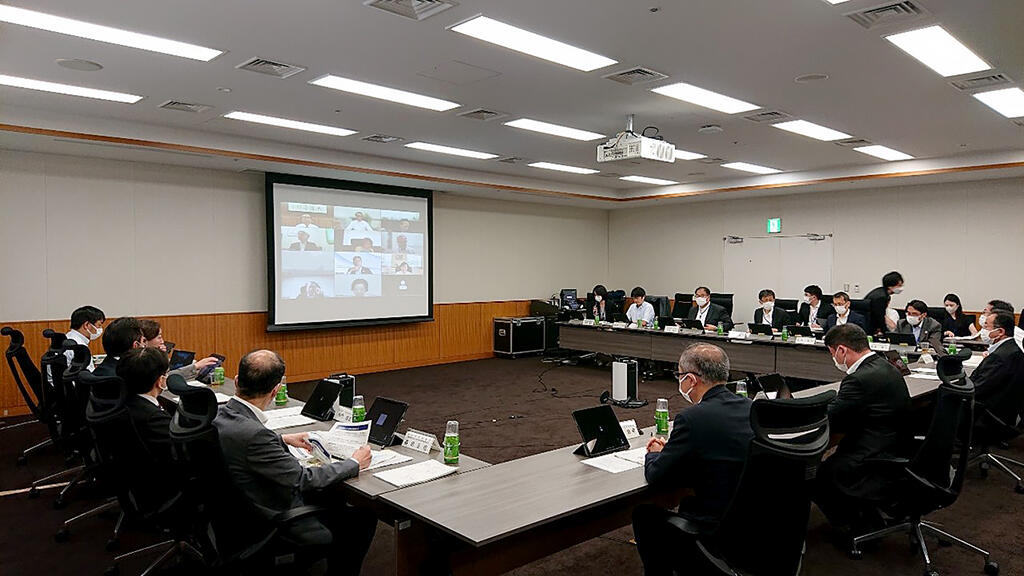In order to strengthen the country's research capacity, it is necessary to create structures that will facilitate 'all Japan' collaboration toward co-creation that transcends the framework of fields, institutions, universities and sectors. At the Ministry of Education, Culture, Sports, Science and Technology (MEXT)'s Committee for the Strengthening of University Research Capacity, Shinichi Yamamoto (Executive Trustee and Vice President of Toyohashi University of Technology), chair of the Research University Consortium (RUC) general meeting, made proposals concerning specific initiatives, including collaboration between URAs from different universities and the formation of co-creation spaces in the National Institutes of Natural Sciences. It seems that this will be reflected in the package for the comprehensive promotion of regional universities engaged in core and unique research.

The RUC was established in 2017 as a gathering of university research directors and vice presidents who are actively involved in strengthening research capabilities, with a focus on universities selected for the Program for Promoting the Enhancement of Research Universities. In addition to holding symposiums, it has set up task forces that focus on common issues, etc., and proactively held discussions with the relevant departments in MEXT to ensure the sharing of positive examples, know-how and knowledge between universities. As a result, the hiring of URAs and the URA system was established, and the sharing of positive examples and fusions of different fields has progressed. Moreover, international information distribution has grown stronger and Japan's international reputation has increased.
However, over the past 10 years the overall research capacity of Japanese universities has weakened. For example, when compared to leading countries in the top 10% in terms of paper numbers, Japan falls short. 'Collaboration between organizations was lacking when we only provided support for each university, and organizations were just fighting over resources; exhausted by that competition, the depth of university groups was reduced.' (Yamamoto) Numerous young researchers and laboratories within Japan participated in G2P Japan (The Genotype to Phenotype Japan), driving joint studies to accelerate research, and produced outcomes such as four articles in Nature, one article in the New England Journal of Medicine, and one article in Cell through their COVID-19 research. 'This is proof that initiatives transcending fields and institutions are effective, and we need to make sure that these aren't special cases. So we must create infrastructure and draw up plans and strategies to expansively develop RUC initiatives and promote research collaboration across Japan that transcends the framework of fields and institutions,' commented Yamamoto.
Thus, in addition to sharing positive examples, know-how and knowledge, the RUC is creating evidence-based plans and strategies to promote inter-university collaboration, and spaces to facilitate practices that transcend university frameworks.
For these spaces, the RUC is considering joint use and joint research system venues such as the Inter-University Research Institutes. To date, the Inter-University Research Institutes have developed as organizations that fundamentally support research communities in each field, but they are now becoming hubs for co-creation that support universities as well as assisting each field. 'We have announced that the National Institutes of Natural Sciences (the RUC's management organization) will create spaces like the historical Bohr Institute (in Denmark).' When it comes to drafting plans, MIRAI-DX, a platform for URA collaboration, has been set up using the FY2020 supplementary budget, and discussions concerning operations are advancing, with Tohoku University, the University of Tsukuba, Tokyo Institute of Technology, the University of Electro-Communications, Kyoto University, Okayama University and the National Institutes of Natural Sciences at their heart. URAs from each university bring information, discuss it, make plans for joint research that transcends university frameworks, and match and group researchers; this is beginning to yield various outcomes.
Chair Yamamoto noted, 'The ultimate goal is to ensure the development of new research communities that transcend fields and institutions and the creation of research fronts originating in Japan, one-after-another, by promoting these initiatives. In addition to this, we will be able to promote strong team research by making appropriate connections with appropriate people - not just universities and researchers, but also societal collaborations such as with the world of industry.'
This article has been translated by JST with permission from The Science News Ltd.(https://sci-news.co.jp/). Unauthorized reproduction of the article and photographs is prohibited.




